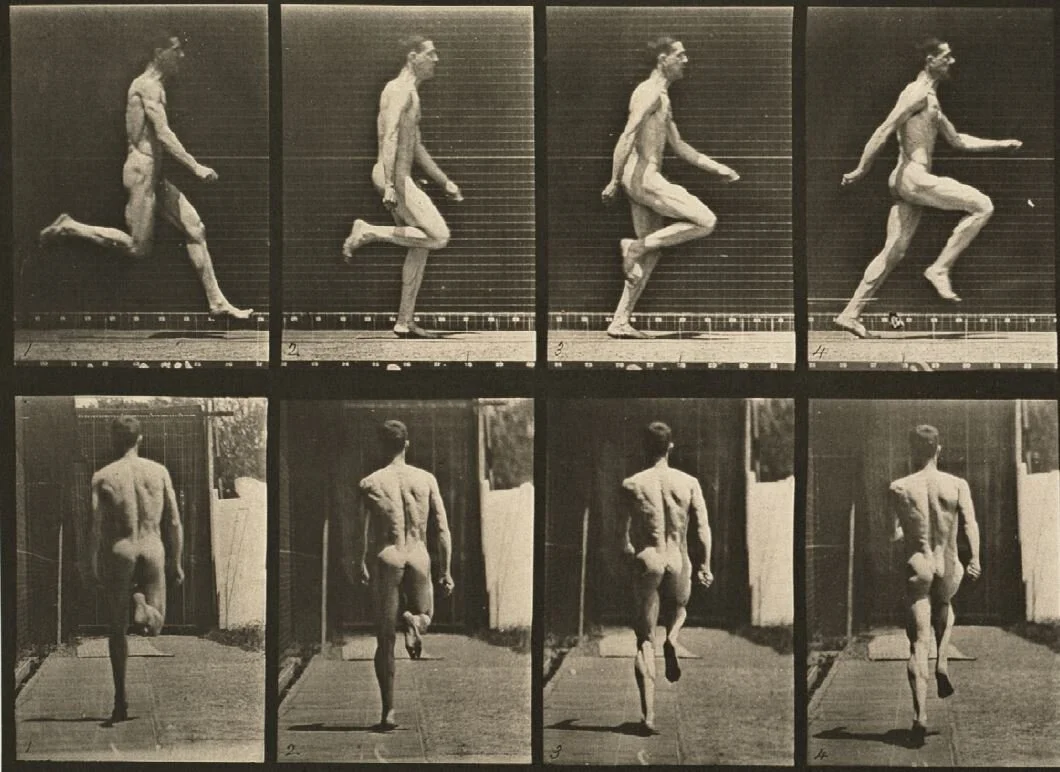From Our Archives: The History of Motion
Arthur Elgort, Stella Diving, Watermill, New York, Vogue, 1995. 127
This article originally appeared in Musée Magazine’s Issue No. 20 - Motion.
By Yotam Ponte
Through still images, photography manages to depict a world that is constantly in motion. While this should conflict, photography instead creates evocative scenes that transform everyday movements into frozen moments of time; documentation that can become art.
Historically, capturing motion accurately has been a challenge for photographers, who have struggled to depict the dynamic movements of objects, scenes and people due to the limitations of technology of their times. Eadweard Muybridge, George Shiras III, Jacques Henri Lartigue, Harold Edgerton, Martin Munkácsi, Henri Cartier-Bresson and Arthur Elgort are seven notable photographers from the 19th and 20th centuries whose missions were to address motion in their photography in ways that accurately reflected the world around them, often developing new technology to do this.
Eadweard Muybridge, Animal Locomotion, Boston Public Library.
In each of their respective works, these artists conveyed the true nature of their subjects by objectively and artistically capturing motion, which allowed for a meditation on dynamic occurrences. This process helped to demystify the movements of the world around them.
During the second half of the 19th century, photographer Eadweard Muybridge (1830-1904) conducted one of the first ever studies on motion in photography, in the process developing motion picture projection. Eadweard Muybridge took sequences of photographs that, when compiled in order, appear to be in motion by enacting complete movements. These sequences could be slowed down and viewed in a way that illuminated movement and explained the motions of Muybridge’s human and animal subjects.
Jacques Henri Lartigue, Mr Folletete( Plitt) and Tupy, 24 March 1912;
Muybridge was originally hired by Leland Stanford, former Governor of California, to discover whether a horse had all its legs in the air mid-gallop. With this question in mind, Muybridge began his study titled “The Horse in Motion,” which involved taking a series of photographs of a galloping horse. This study resulted in a sequence of photographs that appeared to be moving and proved that a horse indeed had all four legs in the air. This was revolutionary in that Muybridge found a way to see and analyze motion through photography. His photo sequences, taken with multiple cameras and then projected with a zoopraxiscope (an early version of a movie projector), began the concept of motion pictures or cinematography.
Muybridge continued using this method to photograph and capture the movements of people and animals, attempting for his photography until later in his life, after which he was published by magazines including Life and commissioned by heads of state like the President of France, Valéry Giscard d’Estaing.
George Boucard During the Race 1911
He is known for his blurred images, making each scene tangible with vehicles that are imbued with intense energy and figures that nearly jump off the page. Some of his most famous photographs show the vitality of life. Car tires were shown as ellipsis and streets were given an almost watery quality with motion blur. In the short time since Lartigue was taking his pictures, photography has quickly changed the way the world is perceived and driven innovation across multiple fields from fashion to anthropology.
Usage of flash in photography enabled photographers to capture motion particularly well, and in the 20th century, this technique was even further developed by Harold Edgerton (1903-1990). Inventor of the electronic flash, Harold Edgerton created a technique that managed to capture the movement of objects as still images—allowing for meditation on everyday and staged occurrences that might not otherwise be observable. As a photographer and electrical engineer, Edgerton developed this new form of photography in the early 1930s to capture motion that even the human eye could not see.
In a work titled “Milk Drop Coronet,” Edgerton photographed a drop of milk as it hit liquid, forming an almost perfectly symmetrical crown-like shape in the liquid that would otherwise be unobservable to the human eye. Edgerton also photographed bullets shooting through various objects–such as apples, lemons and playing cards–in single exposure shots. He also used multiple exposure images to photograph athletes playing sports and show the full range of their movements.
Capturing motion and making it visible in a photograph can be seen as a way to seek an objective truth, witnessing movement as it happens up close and frozen in time. Edgerton never classified himself as an artist—explaining that he is “after facts, only the facts”—and instead considered himself an engineer first and foremost. In portraying dynamic scenes as still photos and pausing movement, Edgerton allowed for the beauty to be found in the facts, through reflection on motion.
Read the rest of the article in Magazine 20 - Motion











